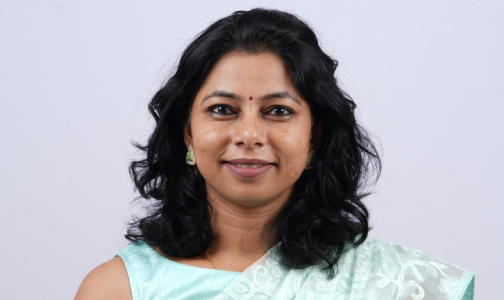Thousands of lives of Indian women can be saved each year by a simple act done once a month which takes only a few minutes
The simple act of breast self-examination once a month can save the life of as many as 30-40% of breast cancer patients in India, who currently die of the disease because it gets detected in advanced stages when no treatment is possible. About 75% of all breast cancer patients in the country are already in stage 3 or 4 of the disease when it gets diagnosed, leading to a survival rate of only 20%. This was said by Dr. Saphalta Baghmar, Senior Consultant, Dept. of Medical Oncology of Amrita Hospital, Faridabad, at a meet highlighting the importance of breast self-examination. October is observed worldwide as the Breast Cancer Awareness Month.

Said Dr. Saphalta Baghmar, Senior Consultant, Dept. of Medical Oncology, Amrita Hospital, Faridabad: “Breast cancer is curable if detected early. Most people are not aware that even young women in the age group of 20-30 years can develop breast cancer. It is recommended that all women start breast self-examination once a month, when they turn 20 years of age to detect breast cancer in very early stages. It involves looking at and feeling the breasts to detect any anomalies. This self-examination, which is easily done and takes only a few minutes, can help in early detection of breast cancer. If detected in stage 1, there are 98-99% chances of being cured with proper treatment.”
Women should immediately see a doctor if they find change in the look, feel, or size of the breast, or find a swelling, lump or thick spot in the breast tissue. Any pain in some spot or warmth, redness or dark spots on the skin of the breasts are a cause of concern. “About 30-40% of patients who currently die of breast cancer can survive with breast self-examination and early diagnosis. However, most women in India don’t know how to do self-examination of breast. Even if there is a lump in the breast, they keep ignoring it and ultimately come to the doctor in stage 3 or 4 when the chances of survival are only 10-20%. Now, there are many targeted therapies that can increase the life span of stage 4 patients from six months earlier to 4-5 years now, but this is not a substitute to early detection when the disease can be completely cured,” Dr. Saphalta Baghmar said.
Breast self-examination is even more important now with increasing incidence of breast cancer. If incidence of male and female cancers are combined, breast cancer accounts for the highest number. The doctor said this is due to increasing urbanization and risk factors such as eating junk food, obesity, and sedentary lifestyle. “Late pregnancies after the age of 30, or not having child at all, increase the chances of getting breast cancer. Many working women decide not to breastfeed the child as they have to rejoin office within 2-3 months after child birth. This is another risk factor for the disease. Breastfeeding reduces the chances of breast cancer,” Dr. Saphalta Baghmar added.
After breast cancer surgery that involves removal of breast (mastectomy), a common side effect is swelling of the arm or hand (lymphoedema) that may last lifelong. However, surgeons can now conduct surgery to cure the problem by reconnecting the blood and lymph channels. Reconstruction of the entire breast is possible too, and desirable.
Said Dr. Mohit Sharma, Senior Consultant & Head, Dept. of Plastic & Reconstructive Surgery, Amrita Hospital, Faridabad: “Most women who had breast removed due to cancer opt for breast reconstruction, if counselled by their oncologist. After breast reconstruction surgery, women feel much more emotionally stable because the stigma associated with mastectomy goes away and they start to feel normal physically as well as psychologically. In our 20 years of experience, we have found that women are incredibly happy after breast reconstruction. They don’t have to wear specific clothes to hide their deformities and heal completely mentally and psychologically. In fact, most of them tend to forget that they are breast cancer survivors. Hence it is our responsibility to inform patients about breast reconstruction surgery after mastectomy.”



